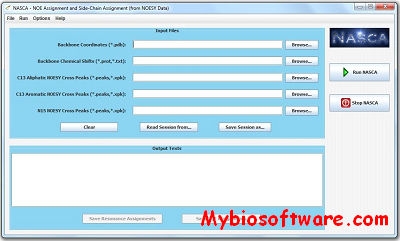NASCA 20110516
:: DESCRIPTION
NASCA (NOE Assignment and Side-Chain Assignment) is an automated program for side-chain resonance assignment and nuclear Overhauser effect (NOE) assignment from NOESY data. It does not require data from TOCSY experiments.NASCA casts the assignment problem into a Markov Random Field (MRF), and extends and applies combinatorial protein design algorithms to compute optimal assignments that best interpret the NMR data. The complexity of the combinatorial search is reduced by using a dead-end elimination (DEE) algorithm, which prunes side-chain resonance assignments that are provably not part of the optimal solution. Then an A* search algorithm is employed to find a set of optimal side-chain resonance assignments that best fit the NMR data. These side-chain resonance assignments are then used to resolve the NOE assignment ambiguity.
::DEVELOPER
Donald Lab at Duke University
:: SCREENSHOTS
:: REQUIREMENTS
- Windows / Linux / MacOSX
- Java
:: DOWNLOAD
:: MORE INFORMATION
Citation
Jianyang Zeng, Pei Zhou, Bruce R. Donald.
Protein Side-Chain Resonance Assignment and NOE Assignment Using RDC-Defined Backbones without TOCSY Data.
J Biomol NMR. 2011 Aug;50(4):371-95. doi: 10.1007/s10858-011-9522-4.
